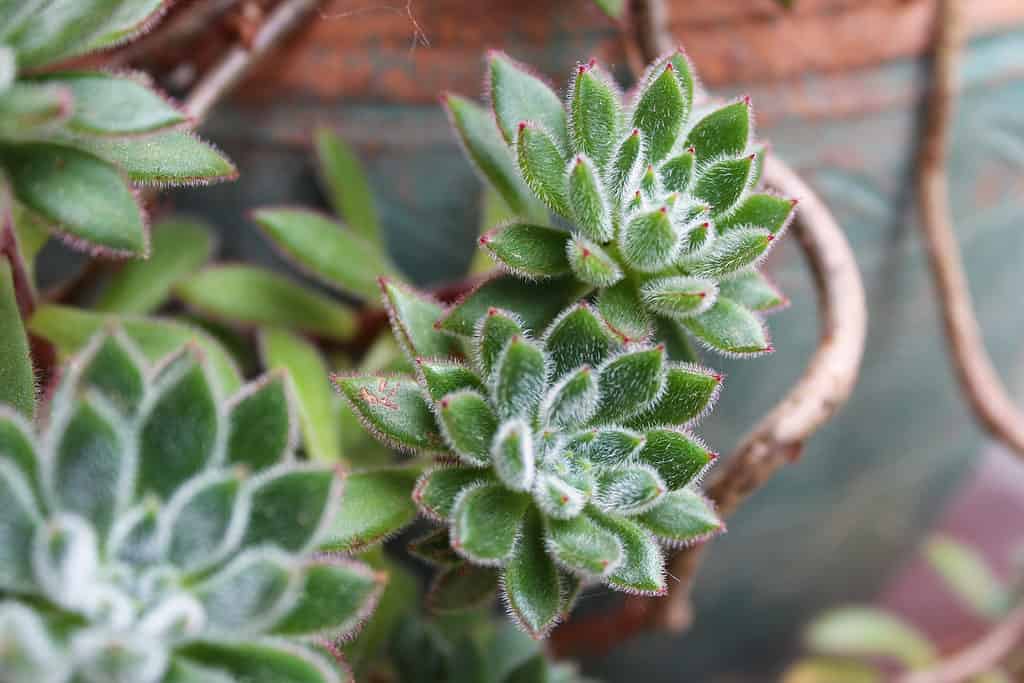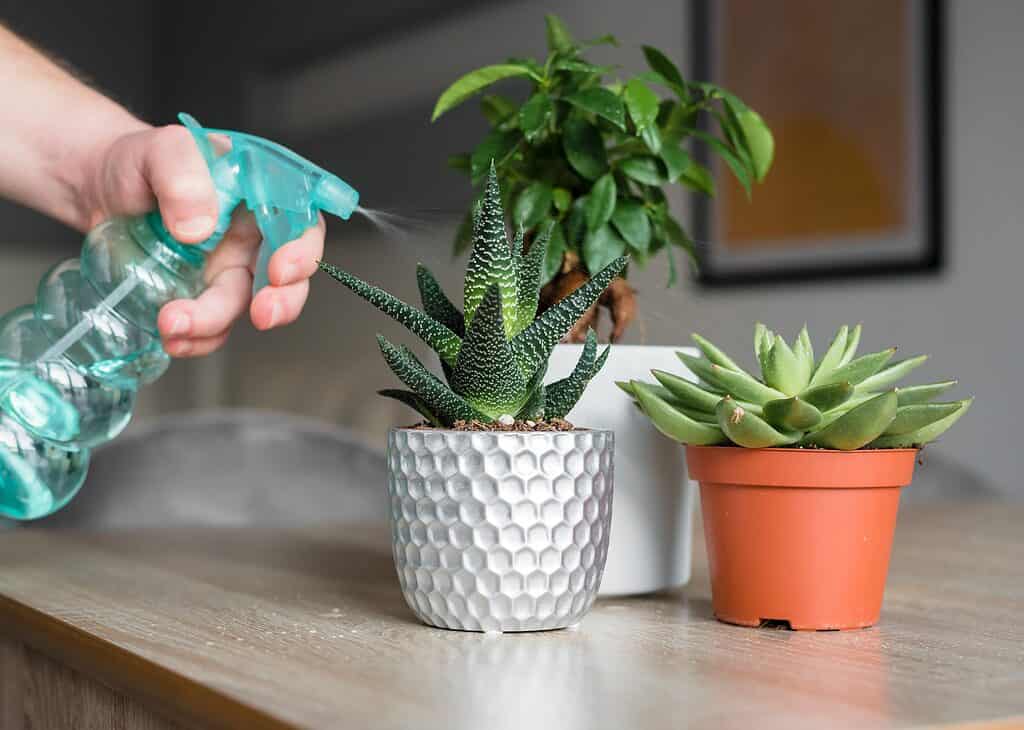Succulents are beautiful, easy, and versatile. As such, it’s no wonder they’re a favorite among indoor plant lovers.
While most indoor gardeners build their succulent collection through leaf cutting or stem propagation and purchasing established plants, you can also grow these delightful plants from seed.
In this article, we’ll discuss how to plant succulent seeds and care for them to promote healthy growth.

Succulents can be grown through propagation, but they can also be grown from seeds.
©Danica Jakovljevic/Shutterstock.com
Choosing the Best Soil for Succulent Seeds
Succulents are known for being drought-resistant and preferring well-draining soil to prevent root rot. Succulent seeds are no different.
Look for a premixed cactus or succulent soil, or create your own with a mix of potting soil, perlite or grit (crushed granite), and sand. Vermiculite is another commonly-used alternative to perlite in succulent mixes, as it offers additional water retention.
Ideally, the soil pH should be around 6-7. While succulents are resilient and known to grow in adverse conditions, this balance will support initial growth. Use a home testing kit and fertilizer to determine and adjust the pH of your soil blend.

Succulents thrive in soil with a pH around 6-7 which you can identify by using a pH meter.
©iStock.com/kb79
The Best Succulents to Grow from Seed
While most succulents can be grown from seed, some are easier than others. If you’re new to the process, consider starting with a beginner-friendly plant.
Some of the easiest succulents to grow from seed include:
- Sempervivum
- Echeveria
- Aeonium
It’s worth noting that many types of succulents are easier to propagate than grow from seed. Additionally, while these options are beginner-friendly, growing a succulent seed takes a lot of time, attention, and patience. Still, it’s a fun experiment for plant lovers!

succulents are some of the easiest to grow from seed.
©iStock.com/GettyTim82
How to Prepare the Workspace
The most important thing to consider when preparing a space for planting succulent seeds is cleanliness. Take a few minutes to wipe down the area with antiseptic wipes, and wash your hands well before handling the seeds. Succulent seedlings are sensitive to pests and bacteria.
To plant your seeds, you’ll need:
- Shallow planters (the terra cotta pot trays work great for succulent seeds)
- Plastic wrap or a tray cover
- A mister
- Your succulent soil blend
- Succulent seeds
- A skewer or toothpick
- A clean trowel
You may also want to lay out a garbage bag or protective surface if you’re working indoors. Consider working over a cookie sheet with an edge to prevent any precious seeds from scattering if they spill. Succulent seeds are tiny and difficult to see.
How to Plant Succulent Seeds
Here’s how to plant succulent seeds, step by step:
- Use your trowel to transfer 2-3 inches of soil into your planters.
- Moisten the soil with your mister, giving it a good soak.
- Carefully sprinkle the succulent seeds over the soil, allowing space for growth.
- Use the skewer or toothpick to gently create more space between the seeds and cover them with a dusting of soil.
- Cover the planters with plastic wrap or a planter tray to promote germination.
Planting the succulent seeds is easy; getting them to sprout can be challenging.
Succulent seeds are more sun-sensitive than their mature counterparts. Rather than placing the delicate seeds in direct sunlight, set them a couple of feet from a sunny window. Bright, indirect light and a consistent temperature of 60-75° F are ideal for succulent seed growth.
How Often to Water Succulent Seeds
While mature succulents are drought resistant and prone to root rot, new growth needs continuous moisture to thrive. Keep the seeds damp with your mister, giving them a spritz each morning and night.
Once the plants root and sprout, you can scale back the watering to once per day until repotting.
It’s also important to remove the plastic cover or tray when initial growth occurs for better humidity control.

An easy way to water your succulents is to mist them with a spray bottle.
©Ilina Yuliia/Shutterstock.com
Pests to Watch for on Succulent Seedlings
Succulent seedlings are susceptible to mealy bugs, spider mites, and fungi. Inspect your seedlings regularly to look for signs of these pests.
If you notice pests, isolate the affected planters from the other seedlings and established plants in your home. Apply a treatment of diluted neem oil with a cotton swab to treat the issue.
When to Repot Succulent Seedlings
As succulent seedlings are incredibly delicate, there’s no rush to transplant them. Unlike other plants, it’s better to wait too long than to move them prematurely. Succulents often grow in compact environments and aren’t as susceptible to crowding as flowers, vegetables, etc.
Wait until your succulents are well rooted with signs of continuous growth — typically between the 3-6 month mark after initial growth occurs.
Wash your hands and gently pull each succulent sprout upward. Their roots shouldn’t be firmly lodged in the soil at this point. However, don’t tug if you meet resistance. Instead, use a clean trowel or toothpick to loosen the dirt around the root ball.
Follow the same planting guidelines as above when repotting, omitting the plastic wrap cover. Choose a slightly larger planter that allows for continued root growth.
The photo featured at the top of this post is © Luciana_Oli27/Shutterstock.com
Thank you for reading! Have some feedback for us? Contact the AZ Animals editorial team.






